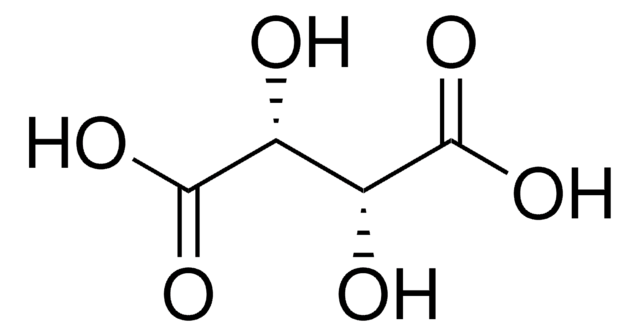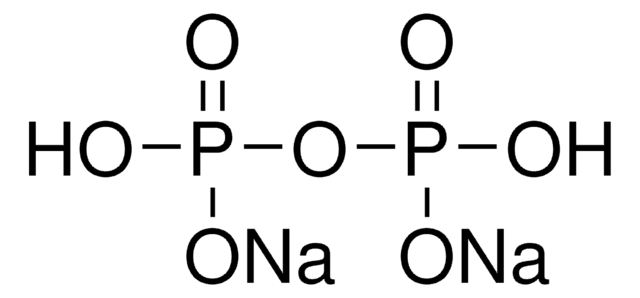T109
L-(+)-Tartaric acid
≥99.5%
Synonyme(s) :
(2R,3R)-(+)-Tartaric acid, L-Threaric acid
About This Item
Produits recommandés
Densité de vapeur
5.18 (vs air)
Niveau de qualité
Essai
≥99.5%
Forme
granular
powder or crystals
Activité optique
[α]20/D +13.5±0.5°, c = 10% in H2O
Température d'inflammation spontanée
797 °F
Pf
170-172 °C (lit.)
Groupe fonctionnel
carboxylic acid
hydroxyl
Chaîne SMILES
O[C@H]([C@@H](O)C(O)=O)C(O)=O
InChI
1S/C4H6O6/c5-1(3(7)8)2(6)4(9)10/h1-2,5-6H,(H,7,8)(H,9,10)/t1-,2-/m1/s1
Clé InChI
FEWJPZIEWOKRBE-JCYAYHJZSA-N
Vous recherchez des produits similaires ? Visite Guide de comparaison des produits
Description générale
Application
- A co-former for the synthesis of etravirine co-crystals.
- A mobile phase additive in thin-layer chromatography.
Mention d'avertissement
Danger
Mentions de danger
Conseils de prudence
Classification des risques
Eye Dam. 1
Code de la classe de stockage
11 - Combustible Solids
Classe de danger pour l'eau (WGK)
WGK 1
Point d'éclair (°F)
302.0 °F - closed cup
Point d'éclair (°C)
150 °C - closed cup
Équipement de protection individuelle
dust mask type N95 (US), Eyeshields, Gloves
Faites votre choix parmi les versions les plus récentes :
Déjà en possession de ce produit ?
Retrouvez la documentation relative aux produits que vous avez récemment achetés dans la Bibliothèque de documents.
Les clients ont également consulté
Notre équipe de scientifiques dispose d'une expérience dans tous les secteurs de la recherche, notamment en sciences de la vie, science des matériaux, synthèse chimique, chromatographie, analyse et dans de nombreux autres domaines..
Contacter notre Service technique






